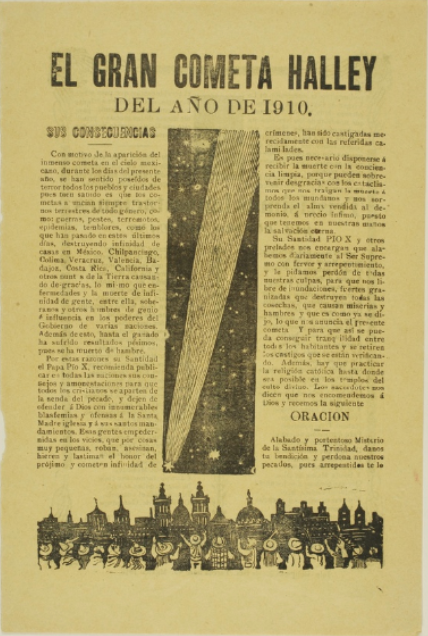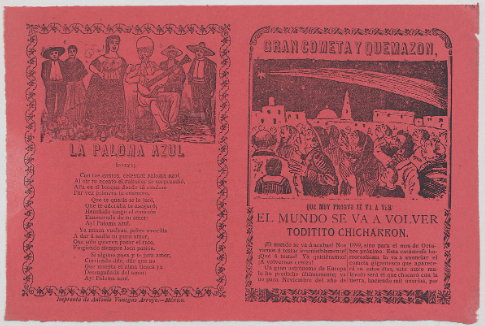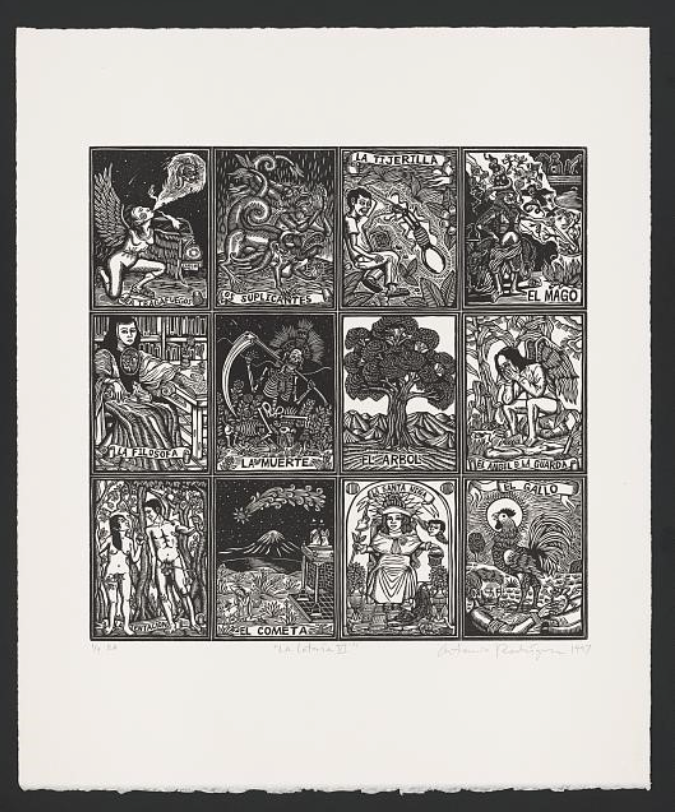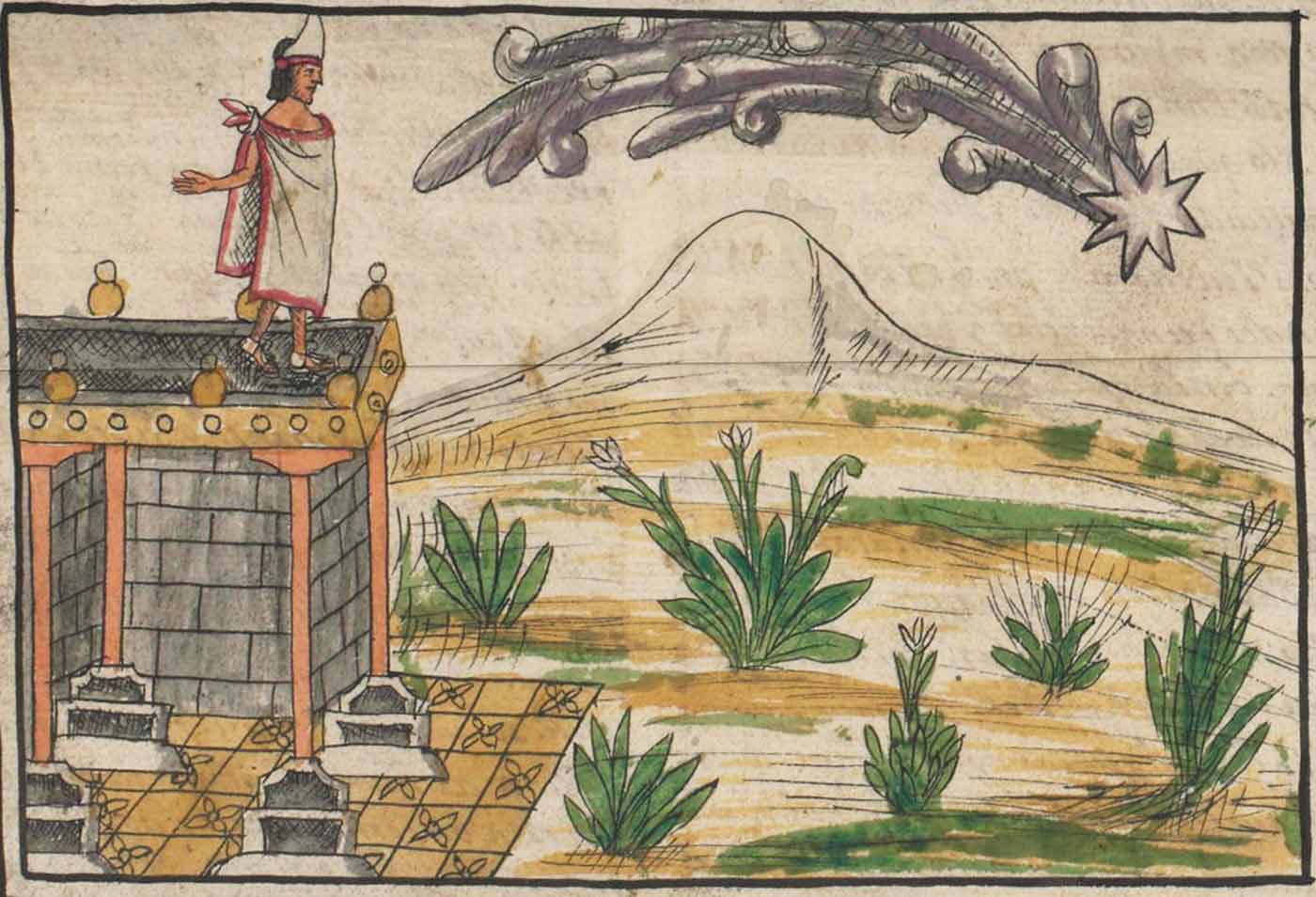EL COMETA
Double-sided zinc relief engraving by Posada in the Art Institute of Chicago (1943.1254)––interestingly, the image was made in 1899, then repurposed for Halley’s Comet in 1910.

Another example from Posada is this broadsheet warning of a “big comet and fire” in Mexico in November 1899 that would kill everyone. The sensationalism of the claim was a perfect match for Posada’s vivid imagination.

A series of twelve linocuts titled La Lotería, made between 1995 and 1998 by Artemio Rodríguez (Mexican, b. 1972), from the Library of Congress graphic art collection, includes an image of Halley’s Comet on the bottom row.
Lotería, literally “lottery,” refers to a traditional Mexican board game similar to bingo.

Rodríguez’s influences include Posada, but also early European woodcuts. The lineage of the comet, second image in the bottom row, can be traced to an image from around 1581 in the Historia de las Indias de Nueva España (History of the Indies of New Spain) or Durán Codex, written by Friar Diego Durán.

Rodríguez’s image is clearly modeled on the Durán Codex illustration, but reverses the composition. A notable difference is that Moctezuma, rather than standing majestically on a rooftop, kneels humbly beside a dog that references pre-Columbian funerary figures. Scroll to the next image to see the Durán Codex depiction of the comet.
